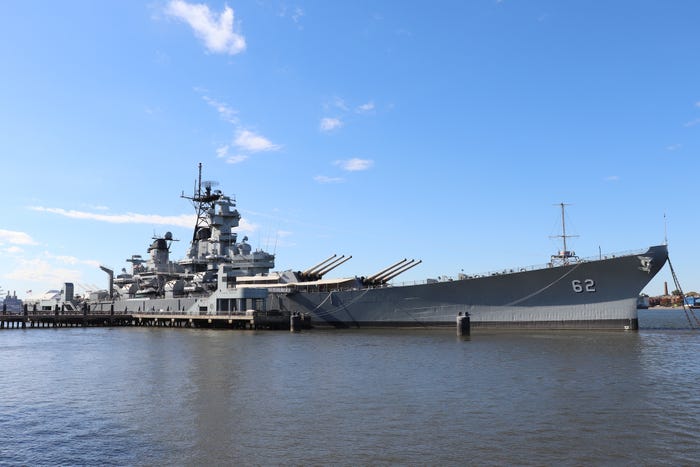The USS New Jersey, recognized as the longest, fastest, and most decorated battleship in United States history, now serves as a floating museum in Camden, New Jersey. This iconic vessel has a storied past, having participated in significant conflicts including World War II, the Korean War, and the Gulf War. The battleship’s impressive legacy is underscored by its remarkable speed, length, and distinguished service record.
Commissioned in 1943, the USS New Jersey was designed for combat and set a record with a maximum speed of 35.2 knots, equivalent to over 40 miles per hour. Stretching 887 feet and 7 inches, it is longer than the Titanic by five feet and nearly three football fields in length. The ship earned an astounding 19 battle stars throughout its service, making it the most decorated battleship in US naval history.
Following its final decommissioning in 1991, the USS New Jersey was transformed into a museum, officially opening to the public in 2001. Visitors can explore various sections of the ship, including the combat engagement center, officers’ staterooms, and the powerful 16-inch gun turrets. Despite its vast size, not all areas of the ship are accessible; according to Ryan Szimanski, curator of the Battleship New Jersey, “I’ve been here eight years now, and I still have not been in all 1,600 rooms.”
The USS New Jersey’s history is rich with notable moments. The battleship was recommissioned by President Ronald Reagan in 1982 as part of an initiative to bolster naval strength. This marked the fourth time the ship was recommissioned, a testament to its strategic importance. It was the first time a sitting president had commissioned a battleship, emphasizing its significance to US military operations.
During its operational years, the USS New Jersey was a formidable asset. In combat, it demonstrated its capability with its nine 16-inch guns, which could strike targets up to 23 miles away. The last time these guns were fired in combat was on February 26, 1984, during the Lebanese Civil War. The battleship’s firepower was invaluable during its service, and it remains unmatched by modern vessels, even as naval technology has evolved.
The museum offers a variety of tours, allowing visitors to choose from four distinct routes that highlight different aspects of the ship, ranging from crew life to weaponry and navigation. Ticket prices for self-guided tours are set at $30 for adults, while guided tours are available for $40. The museum also features memorabilia that honors the ship’s legacy, including inscriptions from former crew members who have visited since its opening.
Within the vast expanse of the ship, visitors can see the enlisted berthing area, designed to accommodate up to 2,000 crew members. During World War II, the numbers swelled to around 2,700 sailors, leading to innovative sleeping arrangements such as hammocks. The officers’ wardroom stands in stark contrast, featuring formal dining settings where meals were served with silver cutlery and linen.
The combat engagement center, added during the 1980s recommissioning, showcases modern naval technology and serves as a reminder of the ship’s strategic capabilities. Its equipment, such as the Tomahawk Weapons System, reflects advancements in military technology, yet the ship retains its original charm and historical significance.
Despite the evolution of naval warfare, the USS New Jersey remains a unique asset. The Navy has phased out battleships, primarily due to advancements in missile technology that have made large-caliber guns less relevant. However, the USS New Jersey’s ability to provide shore bombardment remains unparalleled.
As Ryan Szimanski notes, the absence of a modern equivalent raises questions about the future of naval warfare. “If we got into another first-class shooting war, there’s a strong chance that they would fire me and bring the ship back,” he stated, highlighting the ongoing relevance of this historic vessel.
The USS New Jersey stands as a symbol of naval history and heritage, allowing visitors to engage with the past while reflecting on its significant contributions to the United States military. As a museum, it offers not only a glimpse into naval life but also an opportunity to appreciate the legacy of a battleship that has earned its place in history.







